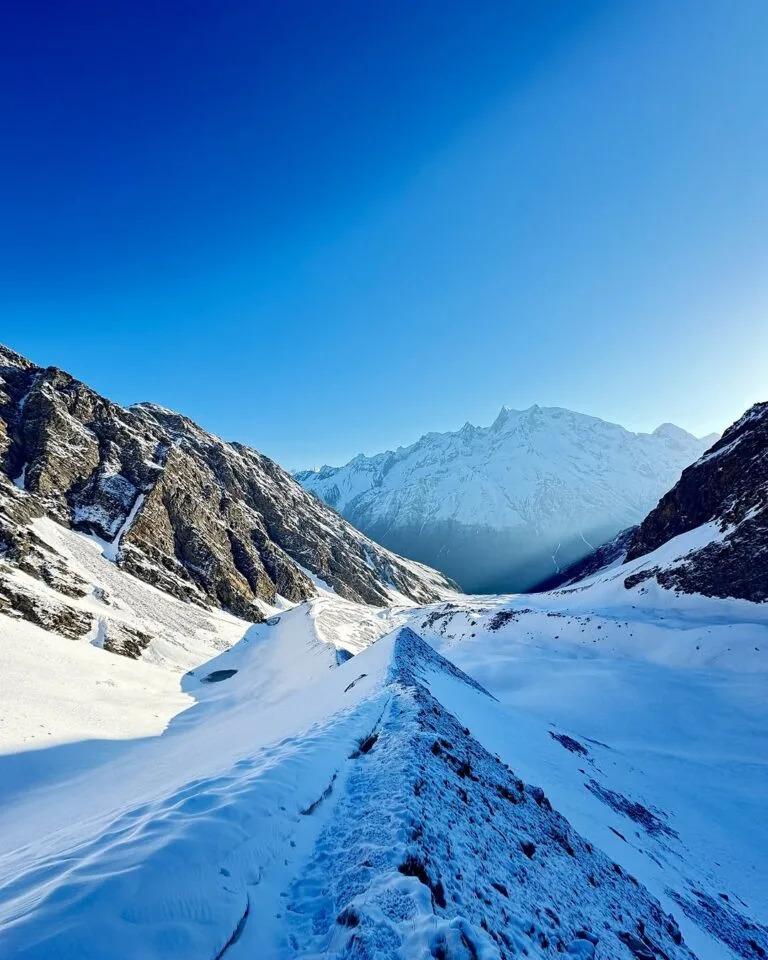Bali Pass Trek Route Map and Key Stops You Should Know

The Bali Pass Trek is a stunning high-altitude trail that connects the beautiful Har Ki Dun Valley with the sacred Yamunotri region in Uttarakhand. It is one of the few Himalayan treks that offers a combination of lush forests, charming villages, alpine meadows, glacial rivers, and a challenging snow-covered pass at an altitude of about 16,200 feet.
If you’re planning to embark on this breathtaking adventure, understanding the route and key stops is essential. Knowing what lies ahead helps you plan your journey, manage your energy, and fully enjoy every moment of this Himalayan marvel.
Overview of the Bali Pass Trek
The Bali Pass Trek usually takes around 8 days to complete, covering approximately 64 kilometers. The trek begins from the picturesque village of Sankri and concludes at the sacred Yamunotri Temple. The route passes through some of the most scenic and remote landscapes in the Garhwal Himalayas.
Throughout the journey, trekkers witness a changing landscape—from dense pine forests and traditional wooden houses to snow-clad ridges and panoramic mountain views. This trek also offers a glimpse into local culture and village life, giving it a perfect blend of adventure and authenticity.
Detailed Route and Key Stops
Here’s a day-by-day breakdown of the Bali Pass Trek route and the main stops you’ll encounter along the way.
Day 1: Dehradun to Sankri (6,400 ft)
Your journey begins in Dehradun, the capital of Uttarakhand. From here, it’s a scenic drive of about 8–9 hours to Sankri, the base camp for many famous treks. The road winds through pine forests, terraced farms, and small mountain towns like Purola and Mori.
Sankri is a charming village nestled in the Govind Wildlife Sanctuary. You can spend the evening exploring local shops and enjoying the mountain views.
Day 2: Sankri to Seema via Taluka (8,000 ft)
A short drive takes you to Taluka, the starting point of the trek. The trail runs parallel to the Supin River, through forests of walnut, deodar, and chestnut trees. You’ll cross wooden bridges and pass by small huts where villagers graze their cattle.
After 5–6 hours of trekking, you’ll reach Seema, a lovely campsite near the Osla village. The views of the valley here are spectacular, especially at sunset.
Day 3: Seema to Rainbasera (10,000 ft)
The next stretch becomes steeper and more challenging. You’ll trek alongside the Supin River, passing cascading waterfalls and rocky patches. The forests slowly give way to alpine meadows.
Rainbasera is a peaceful campsite beside the river, surrounded by tall cliffs and the soothing sound of flowing water. It’s a perfect place to relax and prepare for higher altitudes.
Day 4: Rainbasera to Ruinsara Tal (11,800 ft)
This is one of the most beautiful parts of the Bali Pass Trek. The trail climbs gradually to the mesmerizing Ruinsara Tal—a high-altitude lake surrounded by snow peaks and meadows. The crystal-clear water reflects the mountains, creating a magical sight.
Spend time exploring the area or simply relaxing by the lake. The Swargarohini range looms majestically in the background, adding to the serene beauty of the place.
Day 5: Ruinsara Tal to Odari (13,100 ft)
The path from Ruinsara Tal to Odari becomes more rugged. The terrain turns rocky, and you’ll begin to feel the chill of higher altitude. This route offers incredible views of Bandarpoonch and Kalanag peaks.
Odari serves as the base camp before the Bali Pass summit. Trekkers rest here and prepare for the steep climb that awaits the next day.
Day 6: Odari to Bali Pass Summit (16,200 ft), then to Lower Dhamni (12,000 ft)
This is the most thrilling and challenging day of the trek. You’ll start before sunrise to make the most of firm snow conditions. The climb to the Bali Pass is steep and requires good stamina, balance, and focus.
Once you reach the top, the view is breathtaking—360-degree panoramas of snow peaks like Swargarohini, Bandarpoonch, and Yamunotri ranges. After taking in the beauty and capturing photos, you begin the descent towards Lower Dhamni. The downhill section is steep but rewarding, as it takes you into greener landscapes again.
Day 7: Lower Dhamni to Yamunotri (10,500 ft)
After a good night’s rest, the trek continues through forests and open meadows. You’ll eventually reach the Yamunotri Temple, one of the four sacred Char Dham pilgrimage sites in Uttarakhand.
Here, you can take a dip in the hot springs near the temple—a refreshing reward after days of trekking.
Day 8: Yamunotri to Janki Chatti and Drive to Dehradun
The final stretch involves a short descent to Janki Chatti, followed by a drive back to Dehradun. The journey may be long, but the sense of accomplishment you feel after completing the Bali Pass Trek is unmatched.
Key Highlights Along the Route
-
Har Ki Dun Valley: Known for its natural beauty and cultural richness, this valley is often called the “Valley of Gods.”
-
Ruinsara Tal: A peaceful high-altitude lake that’s a perfect spot for reflection and photography.
-
Odari Camp: Offers close-up views of snow peaks and a thrilling sense of isolation.
-
Bali Pass Summit: The ultimate highlight, where you stand above the clouds and see the grandeur of the Himalayas all around you.
-
Yamunotri Temple: The sacred endpoint of the journey, adding a spiritual touch to your adventure.
Best Time to Do the Trek
The best seasons for the Bali Pass Trek are from May to June and September to October. During these months, the weather is generally stable, and the trail remains accessible. Early summer offers snow crossings, while autumn provides crystal-clear skies and colorful meadows.
Tips for Trekkers
-
Acclimatize properly before attempting the summit.
-
Carry sufficient warm clothing and waterproof layers.
-
Stay hydrated and take short breaks to avoid exhaustion.
-
Respect local customs and avoid littering.
-
Always follow the guidance of your trek leader for safety.
Conclusion
The Bali Pass Trek route is one of the most exciting and picturesque journeys in the Indian Himalayas. From lush valleys and alpine lakes to high mountain passes and sacred temples, it’s a complete adventure that tests endurance and rewards with unmatched beauty.
Each stop along the route adds a unique story to your experience—villages that welcome you with warmth, lakes that mirror the sky, and mountains that remind you how small yet strong you can be.
Whether you’re an experienced hiker or someone seeking a new challenge, exploring the Bali Pass Trek route is an experience that will stay with you forever. Every step brings new wonders, and every sunrise paints a new memory in the heart of the Himalayas.






